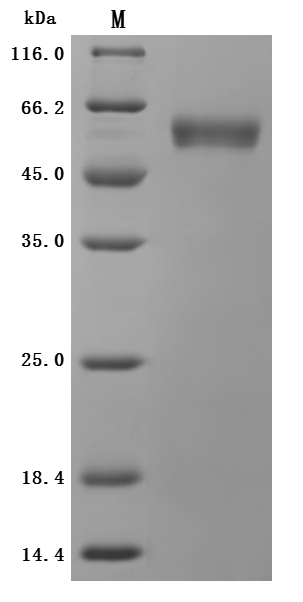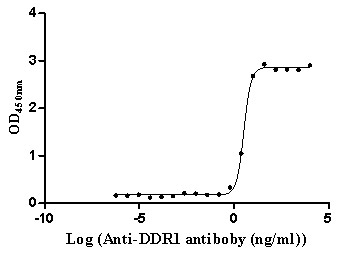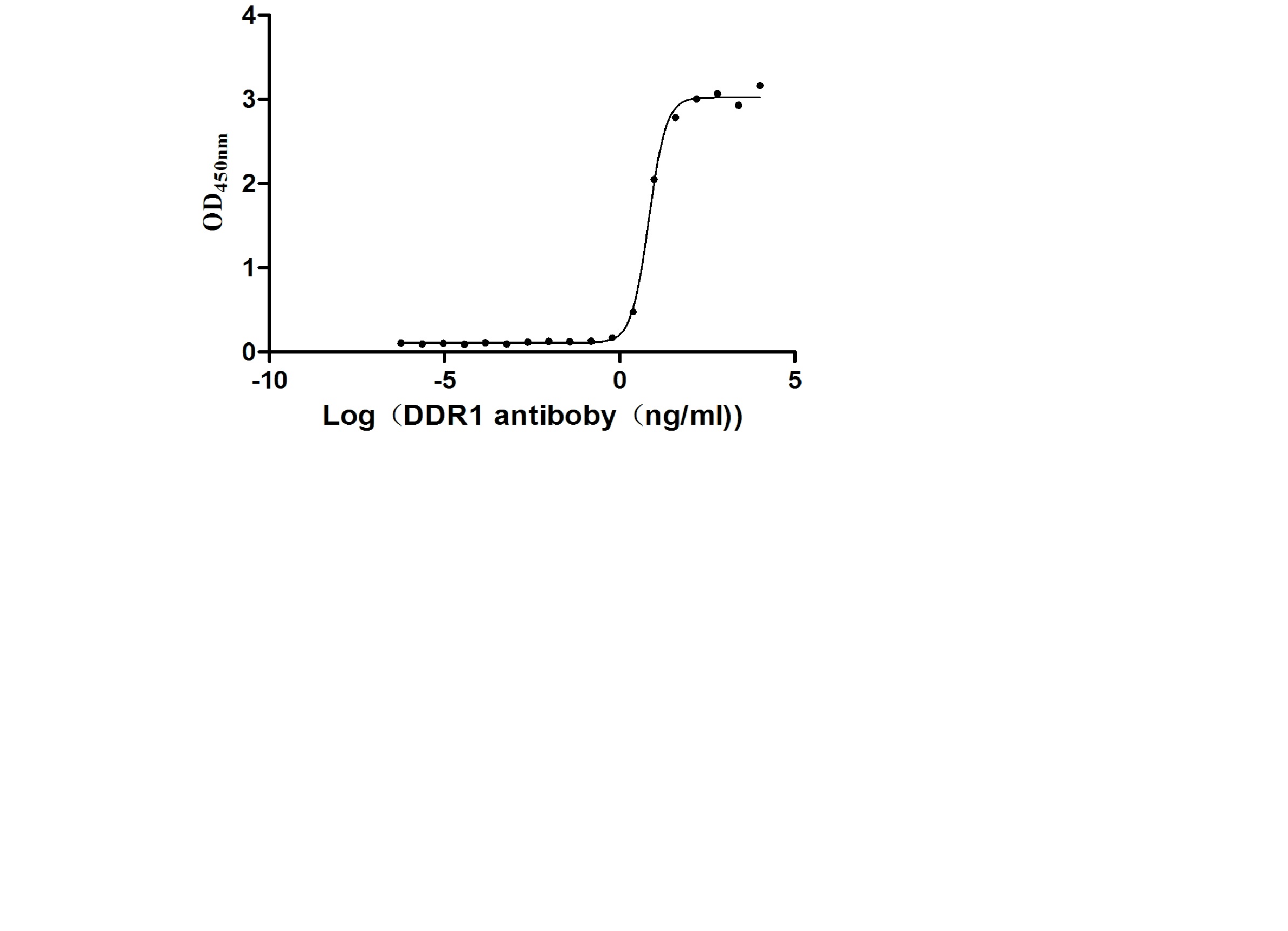Advance your cancer research with our high-quality Recombinant Human DDR1 protein, also known as Epithelial discoidin domain-containing receptor 1 or CD167a. Produced in mammalian cells, this partial protein (21-417aa) features a C-terminal 10xHis-tag, facilitating efficient detection and purification. With a purity of >95% as determined by SDS-PAGE and endotoxin levels <1.0 EU/µg as confirmed by the LAL method, this protein ensures reliable performance in your experiments. The biological activity of Recombinant Human DDR1 is demonstrated by its binding ability in a functional ELISA, with an EC50 of 2.824-3.810 ng/mL for immobilized DDR1 binding to the Anti-DDR1 recombinant antibody (CSB-RA006595MA1HU). Provided as lyophilized powder, our Recombinant Human DDR1 protein enables you to drive groundbreaking discoveries in cancer research with consistent results and precision scientific quality.









